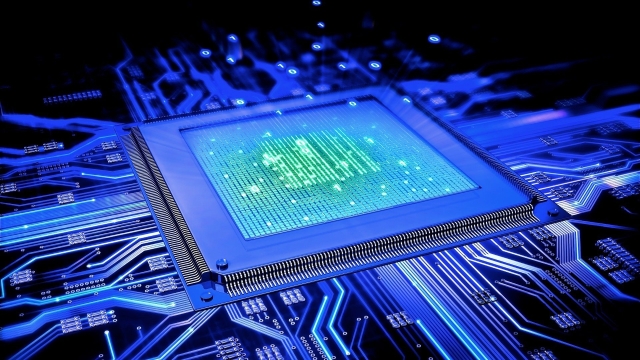![]()
Technology has always been a double-edged sword, offering extraordinary advancements alongside potential pitfalls. Deepfake technology, a recent innovation in the digital world, exemplifies this duality. These rapidly evolving techniques allow for the creation of hyper-realistic synthetic media that can deceive even the most discerning eye. With the rise of deepfake technology, we find ourselves on the precipice of an age where truth can be easily manipulated and distorted, ushering in a new era of digital deception.
Deepfake technology utilizes a form of artificial intelligence known as generative adversarial networks (GANs) to seamlessly blend and replace elements within an image or video. By analyzing and learning from existing data, GANs can craft convincing fake videos, images, or even audio recordings. Initially intended for harmless entertainment purposes, deepfakes have become increasingly sophisticated, raising concerns regarding their potential misuse.
The implications of deepfake technology extend far beyond the realm of entertainment, as this advancing technology poses significant threats to various sectors, including politics, journalism, and security. Political figures could fall victim to manipulated videos, influencing public opinion and undermining trust in the democratic process. Journalists may face challenges in verifying the authenticity of visual evidence, raising questions about the credibility of their reporting. Moreover, the potential for deepfakes to be used as a weapon in cyber warfare or financial fraud cannot be ignored.
As we delve further into the intricacies of deepfake technology, it becomes evident that its impact goes beyond the digital sphere. The dissemination of misinformation and the blurring of reality can have profound consequences on societal trust, personal reputations, and even the course of history itself. With the rise of deepfake technology, we must navigate this brave new world cautiously, seeking countermeasures to detect and combat these digital deceptions.
In unveiling the age of digital deception, it is crucial to understand both the power and the risks associated with deepfake technology. By shedding light on this emerging field, we aim to equip individuals, organizations, and society as a whole with the knowledge necessary to navigate the challenges that lie ahead. As we delve deeper into the intricacies of deepfake technology, let us remain vigilant, fostering a future where truth and authenticity prevail amidst the technologically-driven storm of digital deception.
Understanding Deepfake Technology
Deepfake technology is a rapidly advancing field that is revolutionizing the way we perceive and interact with digital content. Through advanced artificial intelligence and machine learning algorithms, deepfake technology enables the creation of highly realistic and compelling fake videos, images, and audio. By seamlessly replacing the original facial expressions, gestures, or voices of individuals, deepfakes have the potential to deceive and manipulate viewers, giving rise to concerns about the authenticity and trustworthiness of digital media.
At the core of deepfake technology lies the ability to generate synthetic media that closely resembles real footage. By training deep learning models on vast amounts of data, such as images, videos, and audio recordings, these algorithms gain the ability to convincingly manipulate and replicate the expressions and voices of individuals in a given dataset. This training process allows deepfake technology to convincingly map the facial expressions, movements, and vocal patterns of one person onto another, creating the illusion that the target person is saying or doing something they never actually did.
Deepfake technology has its origins in the entertainment industry, with early applications centered around creating digital replicas of actors for movies and video games. However, as the technology has become more sophisticated and accessible, concerns about its potential for misuse have grown. Deepfakes can be used to spread misinformation, defame individuals, and exploit unsuspecting victims. The consequences of such malicious use of deepfake technology can be far-reaching, undermining trust in digital media and exacerbating the already complex landscape of disinformation and fake news.
The Implications of Deepfakes
The rise of deepfake technology has unveiled a new era of digital deception. With the ability to manipulate and alter videos with astonishing realism, deepfakes pose significant implications for various sectors. One area greatly affected is the realm of politics, where deepfakes can be employed maliciously to spread misinformation and manipulate public opinion. The potential for deepfakes to cast doubt on the authenticity of public figures and important events raises concerns about the erosion of trust in information and the destabilization of democratic processes.
Another concerning implication of deepfakes lies in the realm of cybersecurity. As deepfake technology becomes more sophisticated, hackers can exploit it to infiltrate systems and deceive individuals. By exploiting the trust we place in visual and audio content, deepfakes can be used to trick people into sharing sensitive information or unknowingly engaging in harmful activities. This poses a significant challenge for cybersecurity professionals who must adapt their strategies to detect and mitigate the risks posed by these manipulated videos.
The entertainment industry also faces implications with the rise of deepfakes. While the technology offers exciting possibilities for visual effects and storytelling, it also brings to light concerns regarding consent and image rights. As deepfake videos can superimpose the likeness of individuals onto various contexts, the potential for unauthorized use or misrepresentation of a person’s image becomes a valid concern. Protecting the rights and privacy of individuals in the age of deepfakes raises important ethical and legal considerations that must be addressed.
The implications of deepfake technology are wide-ranging and demand attention from various spheres of society. As deepfakes become increasingly convincing and accessible, it is crucial for individuals, governments, and organizations to develop strategies to detect and combat the negative consequences posed by this powerful technology. Only through collective efforts can we safeguard truth, trust, and integrity in an age of digital deception.
Combating Deepfake Threats
https://faceswap.akool.com/
Deepfake technology poses significant threats in various aspects of society. From fake news to targeted harassment and even political manipulation, the implications of this technology are far-reaching. As deepfakes become more sophisticated and realistic, it becomes crucial to develop effective strategies to combat these threats.
One essential step in combating deepfake threats is the development of advanced detection techniques. With the rapid evolution of deepfake technology, traditional methods of identifying manipulated content are no longer sufficient. Therefore, investing in research and development of cutting-edge algorithms and artificial intelligence tools is paramount. These technologies can help analyze audio and visual data, detecting subtle anomalies that indicate the presence of manipulated content.
Another vital aspect of combating deepfake threats is raising awareness and educating the public. Many individuals are still unaware of the existence and potential dangers of deepfakes. By providing clear and accessible information about this technology, people can become more discerning consumers of online content. This includes teaching individuals how to recognize signs of deepfakes and encouraging critical thinking when consuming media.
Collaboration between technology companies, government entities, and research institutions is vital in the fight against deepfake threats. By pooling together resources, expertise, and knowledge, we can develop effective tools and frameworks to detect and mitigate the impact of deepfakes. Sharing information, best practices, and technological advancements will enable a more coordinated response to this growing challenge.
As deepfake technology continues to advance, so must our efforts to combat its threats. By focusing on advanced detection techniques, raising public awareness, and fostering collaborative approaches, we can begin to unveil the age of digital deception and create a safer online environment. It is only through collective action that we can truly mitigate the risks and protect individuals, communities, and democratic processes from the negative consequences of deepfakes.



